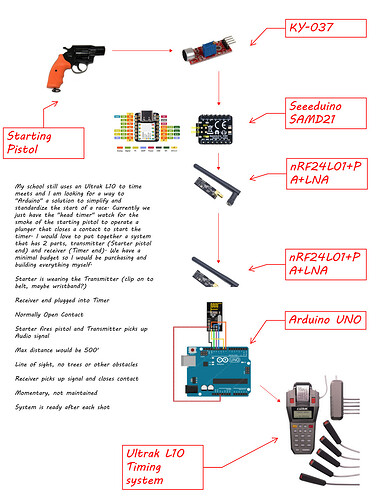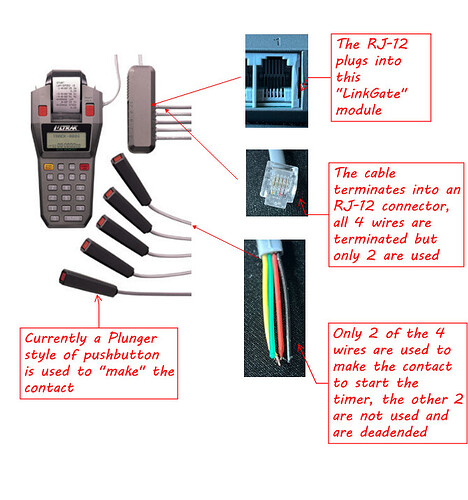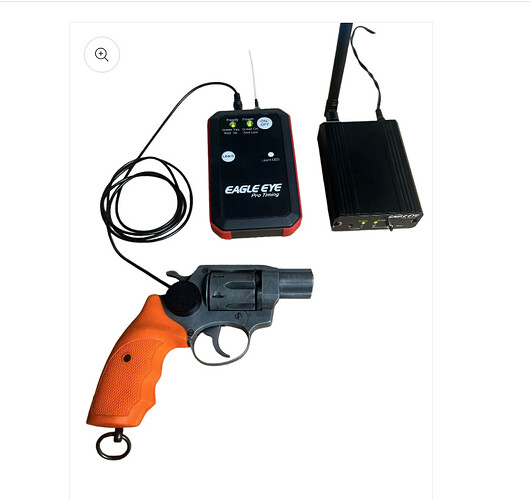Good afternoon Project Forum, and Happy New Year.
Backstory -
I am a Track Coach for a Middle School Team in Michigan and we work with a "Volunteer Army" of parents when they are available to contribute their time. Being volunteers, they have varying skill/interest levels of interest or integrity when they use the "pushbutton triggers" on the Ultrak L10 timing system. I would like to utilize an Arduino and sensors to control the start of the event (starter pistol Bang!). This would free up (1) Volunteer, and everyone can focus on the finish line.
I was originally going down a different path when someone on an engineering forum suggested using an Arduino. I have done some research and had the following ideas for hardware. I am very new to using/setting up anything with Arduino, I grew up with Electromechanical Relaying, so any insight/advice is greatly appreciated
Concept -
Attached is a Block Diagram of sorts to help explain what I am trying to accomplish and with what equipment.
Code -
None attached. I am totally new to writing any code, from what I have seen online a lot can be copy/paste. This would be my next step after knowing the hardware is correct.
Questions:
Remote system (stays with the Starter)
- Is the KY-037 the right sensor to use to capture the starter pistol Bang? I understand that it has a pot to dial down the sensitivity accordingly.
- Is the Seeeduino SAMD21 a good choice for this application? There are so many options, it is rather daunting. Is this unit fast enough to reduce the latency time to a minimum? The timing system measures down to hundredths of a second, I am unsure how much this would add. Repeatability is the main factor...if it reliably adds 6 hundredths of a second, I can factor that out.
Local system (stays with the Ultrak L10)
- The Ultrak L10 uses a Plunger type pushbutton to close a Dry Contact to start the timer. Can the Arduino UNO DO pins be configured as a Dry Contact?
- If not, what else would I have to use to close a contact on the timer?
Appreciation
Unlimited to those who are able to help. I am working on zero budget and volunteering my time with this as well as Coaching. I know there are FAT systems and their cost is in the $$$$ range, so it is out of the reach. We have the Ultrak L10 timer paid for so that is what I have to work with.
Track season is a few months away, and this would give me some time to acquire the components, assemble and de-bug on weekend.



